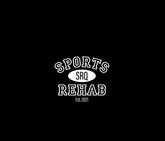Pulled Muscle? Here's the fix
Today we're going to talk about muscle strains. Muscle strains are a common injury that affects many people, especially athletes. A muscle strain occurs when a muscle is stretched or torn, resulting in pain, swelling, and limited range of motion. There are three grades of muscle strain, with grade 1 being the mildest and grade 3 being the most severe.
In this blog post, we will focus on the best evidence-based ways to treat grade 1 and grade 2 muscle strains. The good news is that most muscle strains can be effectively treated with a combination of pain-free range of motion and strength training. So, let's dive in!
Pain-Free Range of Motion
One of the most important things you can do when you have a muscle strain is to move! Ideally, this means moving the affected muscle within a pain-free range of motion, to prevent stiffness and promote healing.
Research has shown that early mobilization and stretching can help reduce pain and improve function in people with muscle strains (1). Gentle stretching exercises should be performed regularly, but only within a pain-free range of motion, or at least low pain levels (less than 4, out of a 1-10 pain scale). Overstretching can further damage the muscle and delay healing.
Strength Training
Once pain-free range of motion has been achieved, strength training can be introduced. Strength training can help restore muscle function, prevent future injuries, and improve overall performance.
A study published in the Journal of Orthopaedic and Sports Physical Therapy found that a six-week strength training program significantly improved muscle function and reduced pain in people with grade 1 and grade 2 muscle strains (2). The program included exercises such as squats, lunges, and leg presses, all performed within a pain-free range of motion.
It is important to note that strength training should only be introduced once pain levels are low. Starting strength training too early can further damage the muscle and delay healing.
Other Treatment Options
In addition to pain-free range of motion and strength training, there are other treatment options that can help speed up the healing process. These include:
-
Rest: Resting the affected muscle can help prevent further damage and promote healing. However, it is important to avoid prolonged periods of inactivity, as this can lead to stiffness and weakness.
-
Ice: Applying ice to the affected area can help reduce pain and swelling. Ice should be applied for 20 minutes at a time, several times a day.
-
Compression: Wearing a compression bandage can help reduce swelling and provide support to the affected muscle.
-
Elevation: Elevating the affected limb above the level of the heart can help reduce swelling.
Conclusion
Early mobilization and stretching can help reduce pain and improve function, while strength training can help restore muscle function and prevent future injuries. Other treatment options such as rest, ice, compression, and elevation can also help speed up the healing process.
Remember, always consult a healthcare professional before starting any treatment program, and listen to your body. If you experience pain or discomfort during any exercises, stop immediately and seek medical attention. Find more tips at SRQSportsRehab.com
Thank you for reading, and happy healing!
References:
-
Shanmugam, M. (2014). Muscle strains and tears: Physiotherapy management. British Journal of Sports Medicine, 48(7), 528-529.
-
Kim, H., et al. (2014). The effects of a six-week strength training program on muscle function and pain in athletes with grade 1 and grade 2 muscle strains. Journal of Orthopaedic and Sports Physical Therapy, 44(6), 447-454.

